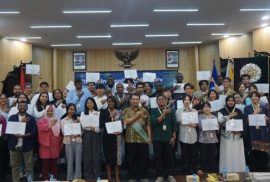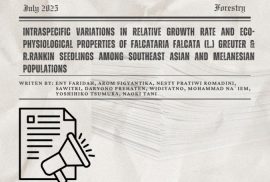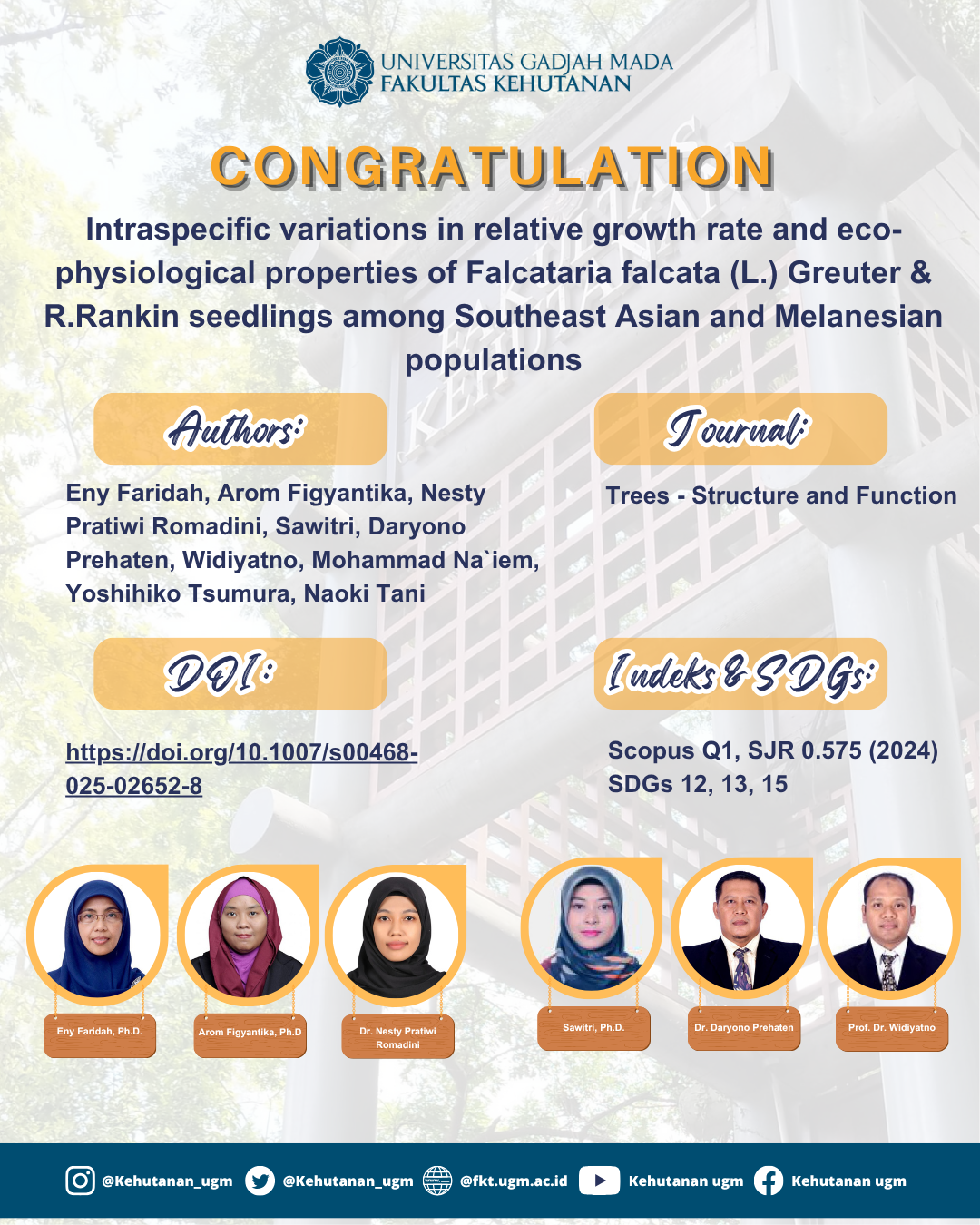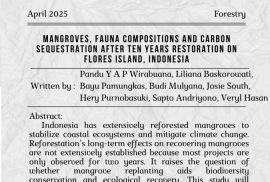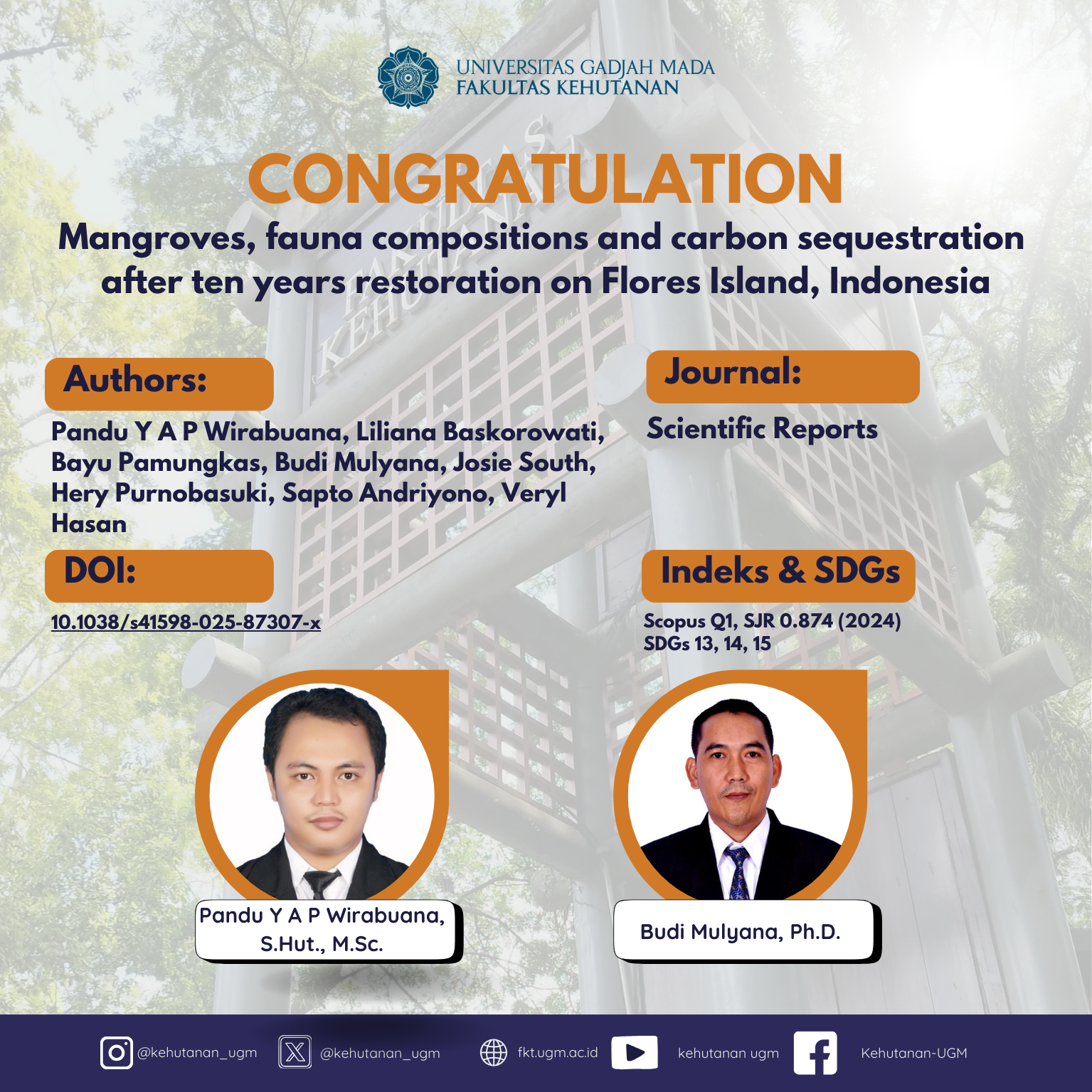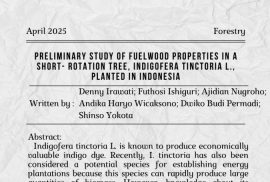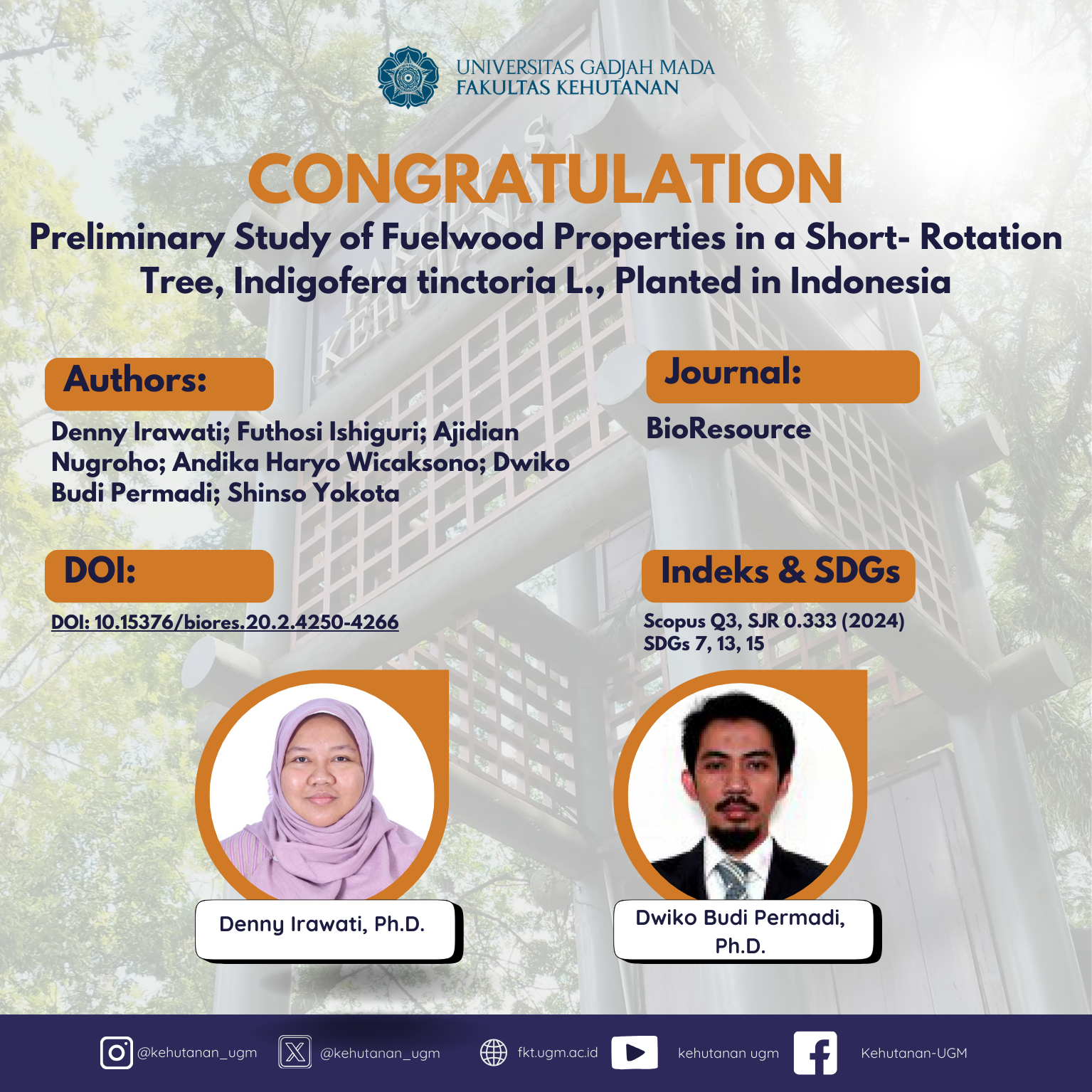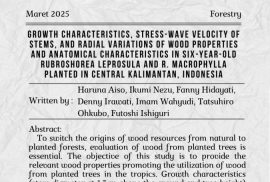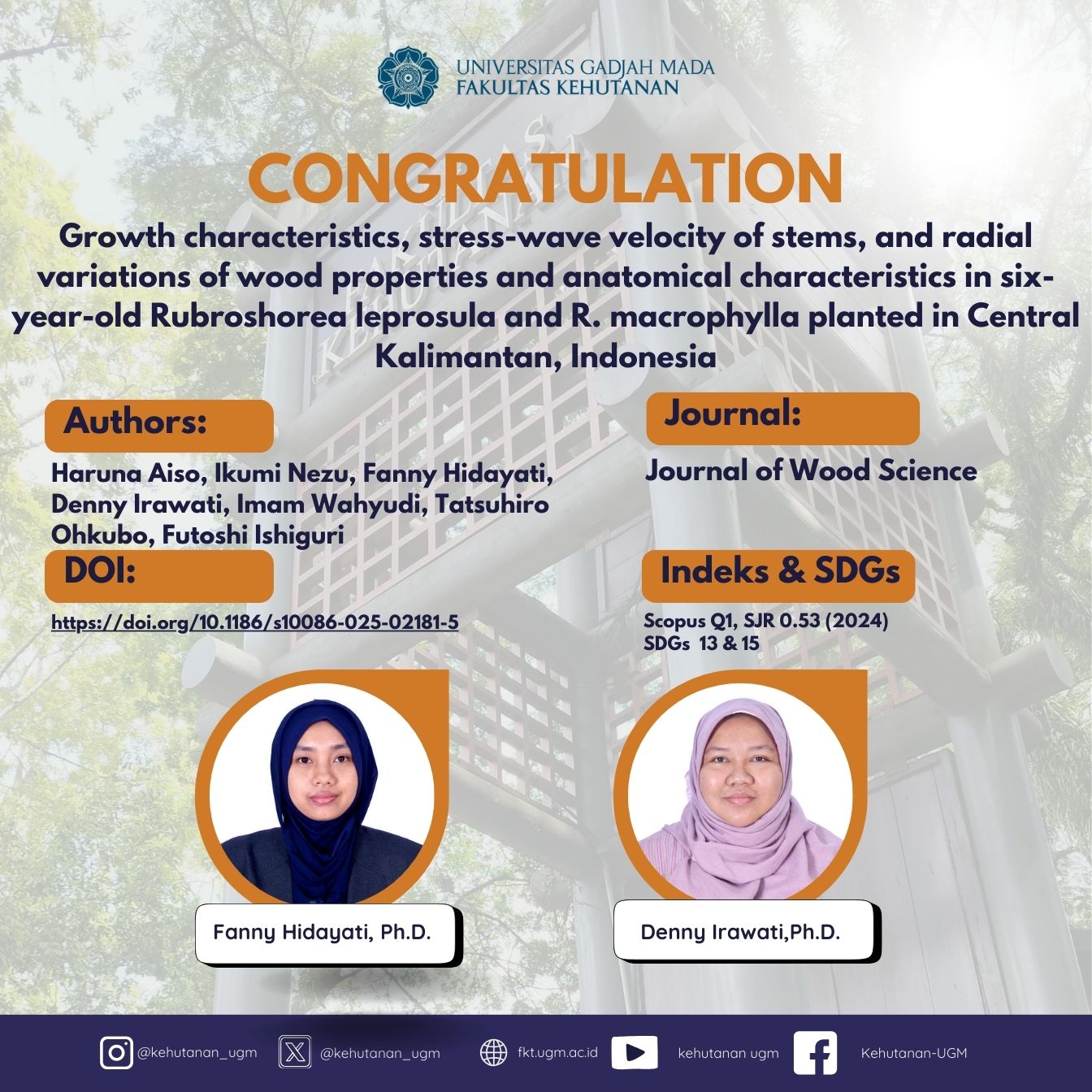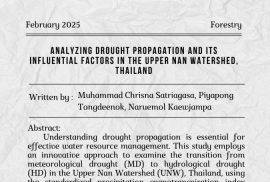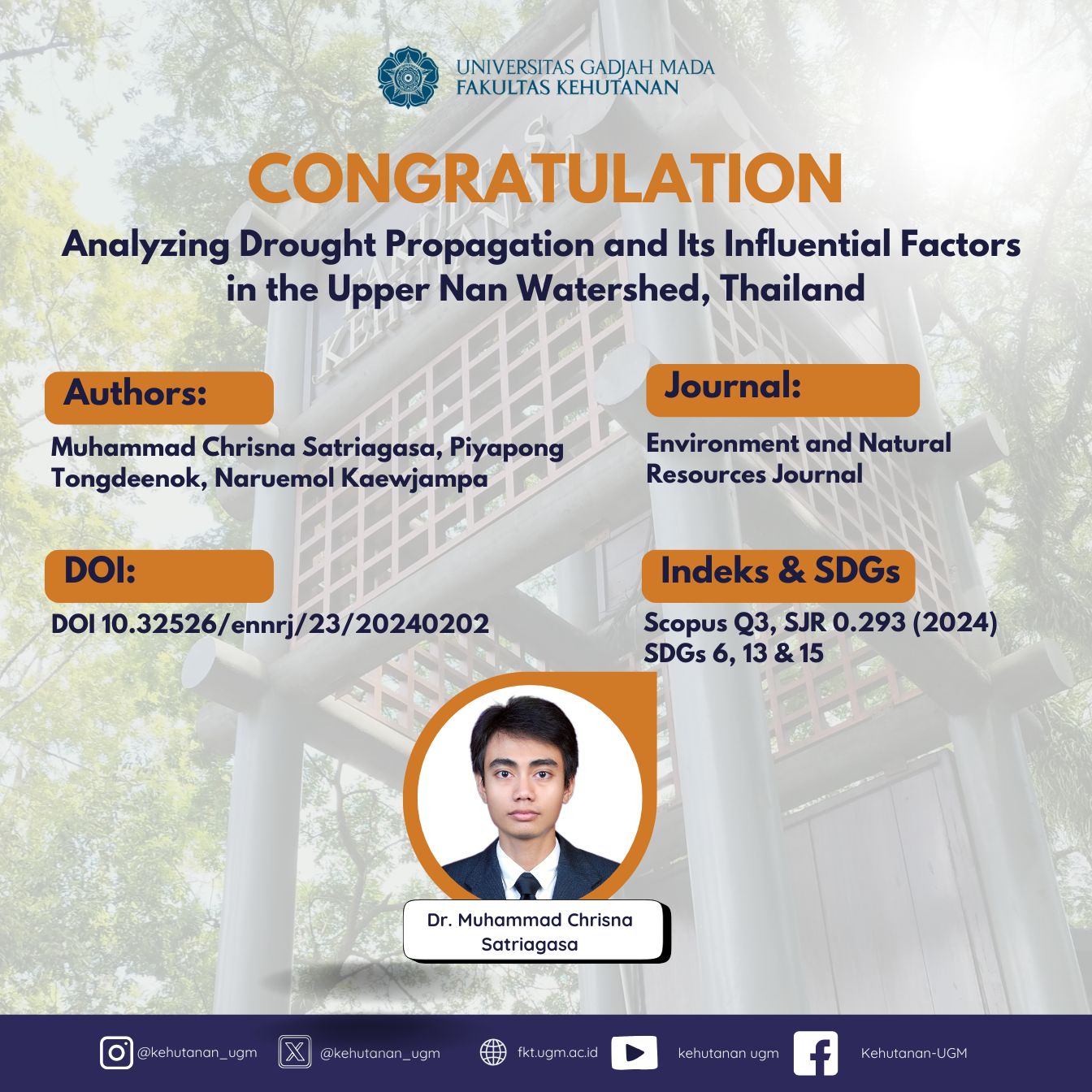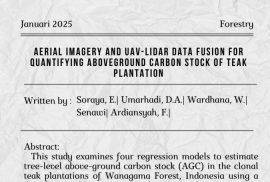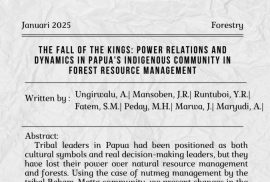Yogyakarta, 26 Agustus 2025 — International Forestry Summer Course (FSC) IX 2025 dengan tema “The Forest Nexus: Innovation in Food, Energy, and Water Sustainability” resmi ditutup melalui sebuah upacara penutupan yang dipimpin oleh Ir. Dwiko Budi Permadi, S.Hut., M.Sc., Ph.D., IPU, Wakil Dekan Bidang Akademik dan Kemahasiswaan Fakultas Kehutanan.
Program yang berlangsung pada 11–26 Agustus 2025 ini menghadirkan 36 peserta dari 11 negara. Selama dua minggu,

